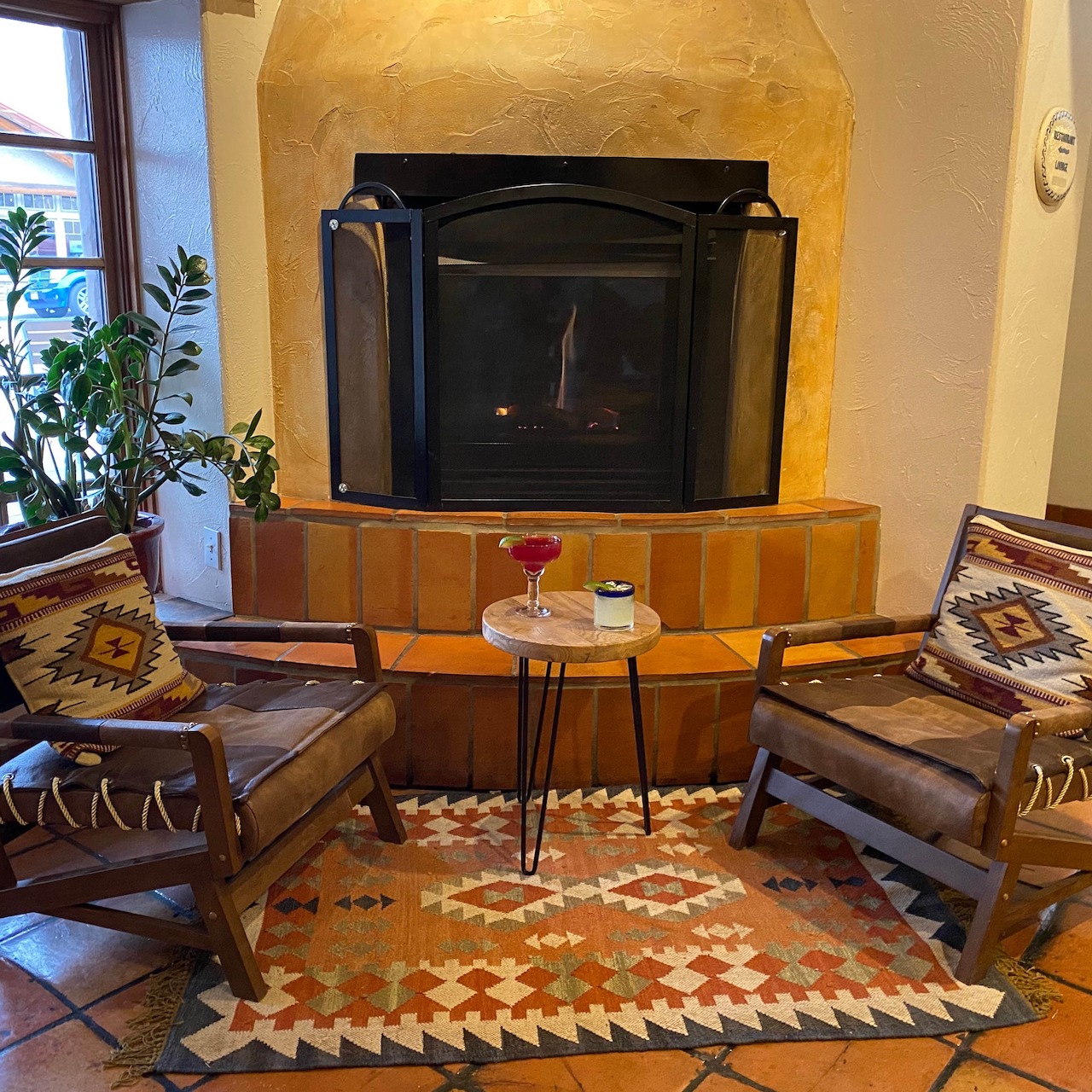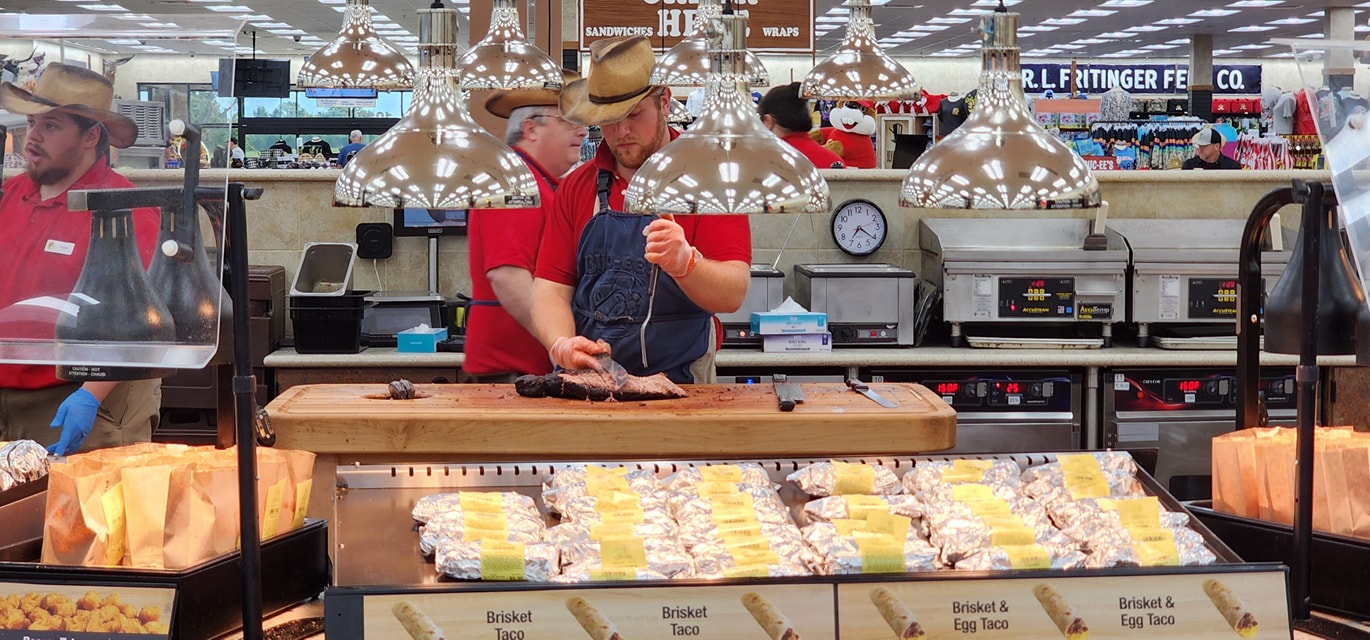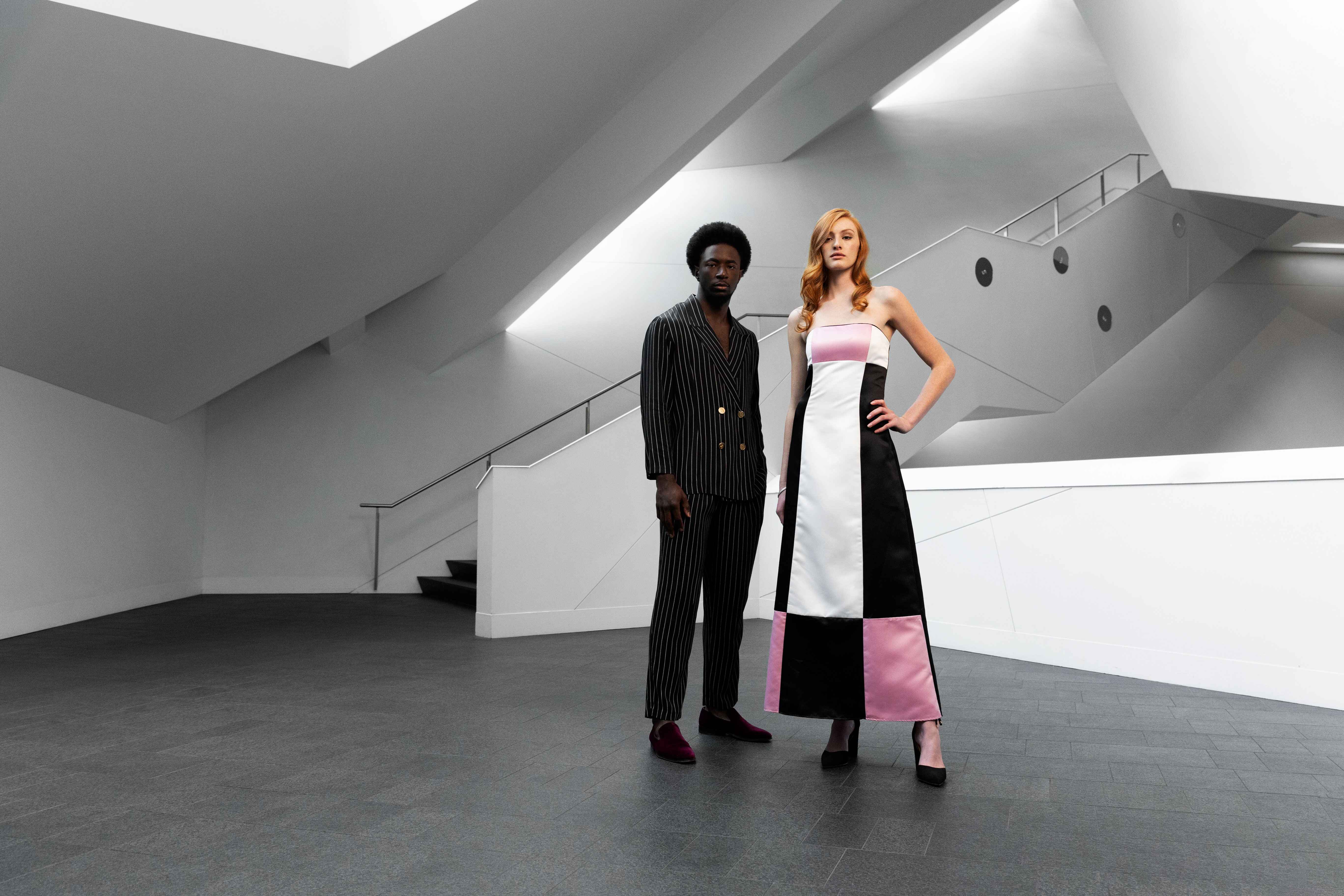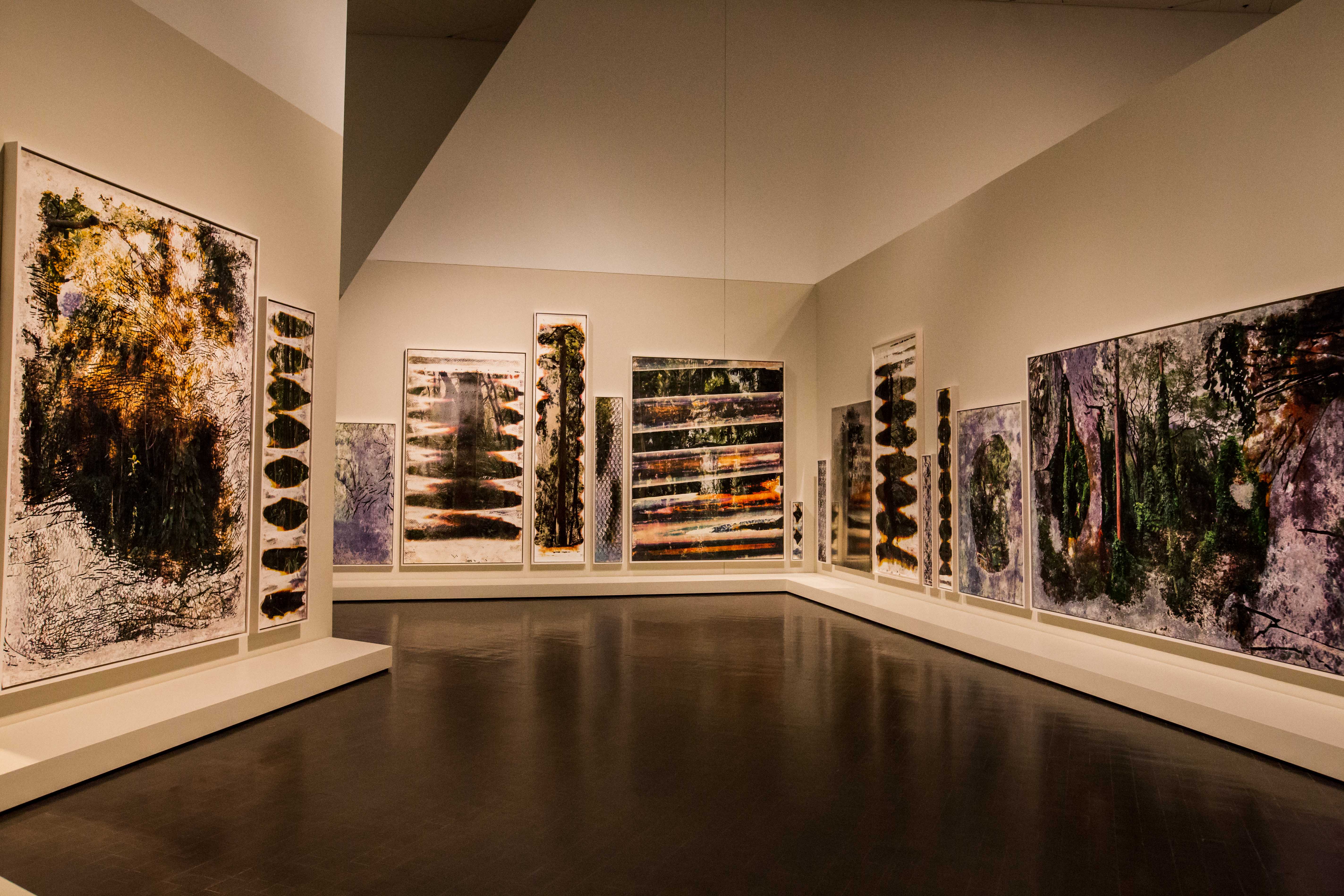–
The natural environment continues to intrigue artists of all mediums, providing ever-evolving scenic views that are beautiful or terrible, pristine or molested. Historically, photographers have remained especially keen on landscapes, providing images of exotic or faraway places to people who may never come close to witnessing it on their own. Landscape photography is as old as photography itself — arising from the need to keep cameras steady and still for long periods of time, focused on subjects that did not noticeably move. But contemporary landscape photography takes on a new role: to depict landscapes in unexpected and sometimes abstract ways. This summer at the Denver Art Museum (DAM) 40 photographers have contributed more than 100 works to the show New Territory: Landscape Photography Today.
“It would be naive to wear the rose-colored glasses that Ansel Adams could still wear [in his time]” explained Christoph Heinrich, director at DAM. He suggested that the views of these contemporary photographers (no works were created in this exhibition before 2000) may not instill the hope and wonder of Adams’ scenic and iconic masterpieces, but instead might represent more relevant values from our current society.
New Territory gives viewers two narratives — one that focuses on present-day perspectives of landscapes and one that explores the photographic techniques used as tools to provide those perspectives. Unlike the original or traditional landscape photographers, the artists in this exhibition avoid romanticizing nature and in that choice, their works become stories rather than life-like representations. Curated by Eric Paddock, curator of photography at DAM, New Territory as a whole is its own story, loosely divided into eight chapters that frame the different collections. These chapters provide the guidelines to understanding how contemporary photographers are disrupting the notion of landscape photography as simply pretty.
Illusionistic Landscapes

Visitors are first greeted by a floor-to-ceiling triptych (three-paneled piece) by Clifford Ross depicting a rolling wave cresting before a turbulent beach, printed on three wooden panels. Wood Wave XLIX throws viewers into the state of mind that this is no ordinary photography exhibit. Ross, in order to capture this wave and others pictured later in the exhibition, wore a wetsuit and waded into the water. He had helpers holding ropes on shore that were anchored to him. He wanted to capture a moment that most would shy away from — a moment where you’d normally close your eyes or dive beneath the wave. Witnessing a wave of this size at its climax holds a different power than watching the waves from a beach or a boat and it’s that fear and terrific intrigue that Ross yearns to express.
Turning the corner after this first display leads viewers to a room featuring Jungjin Lee, a Korean artist who used Korean mulberry paper to create seven pieces that are reminiscent of Adams’ black and white photographs but appear softer at the edges. Instead of the stark relief and detail of Adams, Lee expresses different landscapes with a quality similar to watercolor or calligraphy, making the viewer wonder if the photos are real or painted.
Abelardo Morell, a Cuban-American photographer, is also featured in this first chapter of the exhibition, with several pieces that use a tent camera to project an image onto the ground. The subjects of these fluctuate between the various items on the ground — pinecones, grass, detritus — and the projected subjects of familiar landmarks like El Capitan in Yosemite.
Focusing on the techniques of photography, Alison Rossiter’s series serves as a moment to time travel and travel physically to a dreamscape. Collecting expired photo paper from every decade for the last 100 years, Rossiter exposed sections of the paper without ever using an actual camera. Through this experimentation, suggestions of landscapes appear, including one that has a blurry star-lit sky.
Other artists featured in this section are Sharon Harper, Adam Jeppesen, Dan Holdsworth and Penelope Umbrico.
Memory
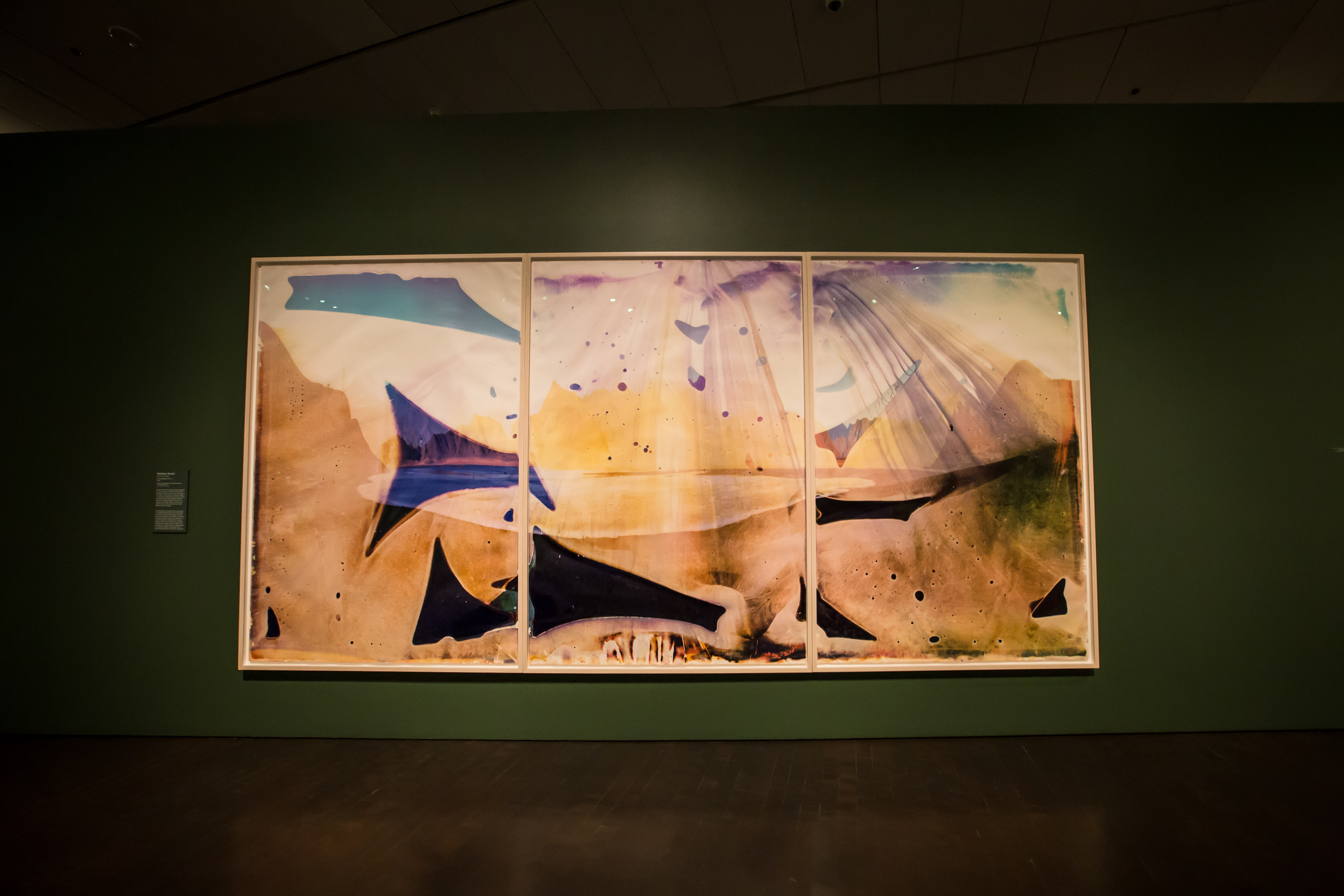
Photography is often considered to represent an exact moment in time and especially with landscapes that do not change quickly, photographs are seen as evidence. But much like our own memories, photographs are not always accurate depictions and may instead portray the photographer’s intentions or viewpoints. This section of the exhibition explores the similarities between photographs and our memories and makes us wonder how accurate either are.
Beginning with Sally Mann, who contributed three pieces in a southern gothic tone, this chapter of the exhibition at times feels nostalgic. Using a sepia-colored light, Mann hints at the appeal of old photos, ones that have been worn with time. They remind us, more than other pieces in the show, of a single moment steeped in personal history.
Sharon Harper’s piece in this section shows the Grand Canyon at each hour of a sunrise, where the differences are subtle and yet suggestive of movement — like a timelapse. Because the series is placed in a grid on the wall and yet separated into smaller parts, it elongates the process of the sunrise and suggests that truly magnificent moments like that one are stretched in our memories.
The pivotal piece in this chapter and in the exhibition altogether is Matthew Brandt’s Lake Isabella CA TC 2. Another triptych, like Ross’s wave in the first room, Brandt’s version uses experimental photographic processes in conjunction with a typical landscape photograph to reflect the faulty and selective tricks our minds play when recalling memories. Brandt first photographed a lake in California, then after developing the image on three large panels, he submerged them in water collected from the lake. The photographic chemicals reacted with the minerals and biologic matter in the lake water, separating layers from certain surface areas and imbibing unexpected colors in others. Only a few slivers of the original photograph remained realistic and relatively intact, providing small snapshots into the scene on the day he took the picture. The rest is obscured, a result of the experimental process, and embodies how memories work — at times precise, at other times blurred or tinted.
Other artists featured in this section are Andrew Beckham, Sharon Harper and Sandra Kantanen.
Intervention

The photographs in Intervention show how humans disrupt nature, whether it’s destructive, temporary or beneficial. As residents of a planet so diverse we cannot say with any certainty that we know of all the species inhabiting it with us, we have an almost unending source of inspiration in nature. But as the natural environment changes — on a global scale with climate change or more locally with the clearing of a forest for real estate development, for instance — so do our perceptions of it. Increasingly, our relationship to nature has been strained or suffocated as cities engulf open space and plastic fills the oceans and yet even with this self-exiling from the wilderness, we can’t help but remain fascinated by it. And since we don’t have to rely so heavily on photographer-adventurers to bring back proof of magical landscapes anymore (we can travel there ourselves just as easily) their role in documenting nature is evolving as much or more than our relationship to nature.
Jaakko Kahilaniemi’s two digitally-altered photographs depict a plot of land his family has owned for generations, one showing the points where his family mistakenly altered the land and the other showing where Kahilaniemi planted new trees to amend for his family’s past. Elena Dorfman’s single piece is composed of 100 layers of photographic exposures from the same viewpoint over a quarry. The many exposures provide an image that is thick with history, illustrating how we unrobe the landscape in an almost violent way.
Adam Jeppesen is represented for the second time in the exhibition with a diptych (two panels) that shows a forest in disrepair. Jeppesen trekked, alone, from the Arctic Ocean in Alaska to Tierra Del Fuego at the southern tip of South America documenting the scenery along the way. Since the journey was roughly 19,000 miles, it is no wonder that Jeppesen was able to capture some remote and overlooked places. It is also no wonder he captured other scenes that, though remote, are not idyllic as we might aspire for. Even when you walk across two continents, the impacts of humans do not go unnoticed, and that is the strength that fuels Jeppesen’s photographs.
Toshio Shibata takes a more optimistic approach to the intervention of humanity in nature with three photographs that use manmade structures as a design element integrated with wilderness. In one, a concrete wall divides a luxurious expanse of trees with a straight diagonal line. In another, the place where water meets land is disrupted by some kind of ruins. Although a strict wilderness aesthetician might find these traces of humanity discouraging, the way Shibata captures it is mesmerizing and carefully hopeful.
Other artists featured in this section are Riitta Päiväläinen, Dornith Doherty and Paula McCartney.
Human Landscapes
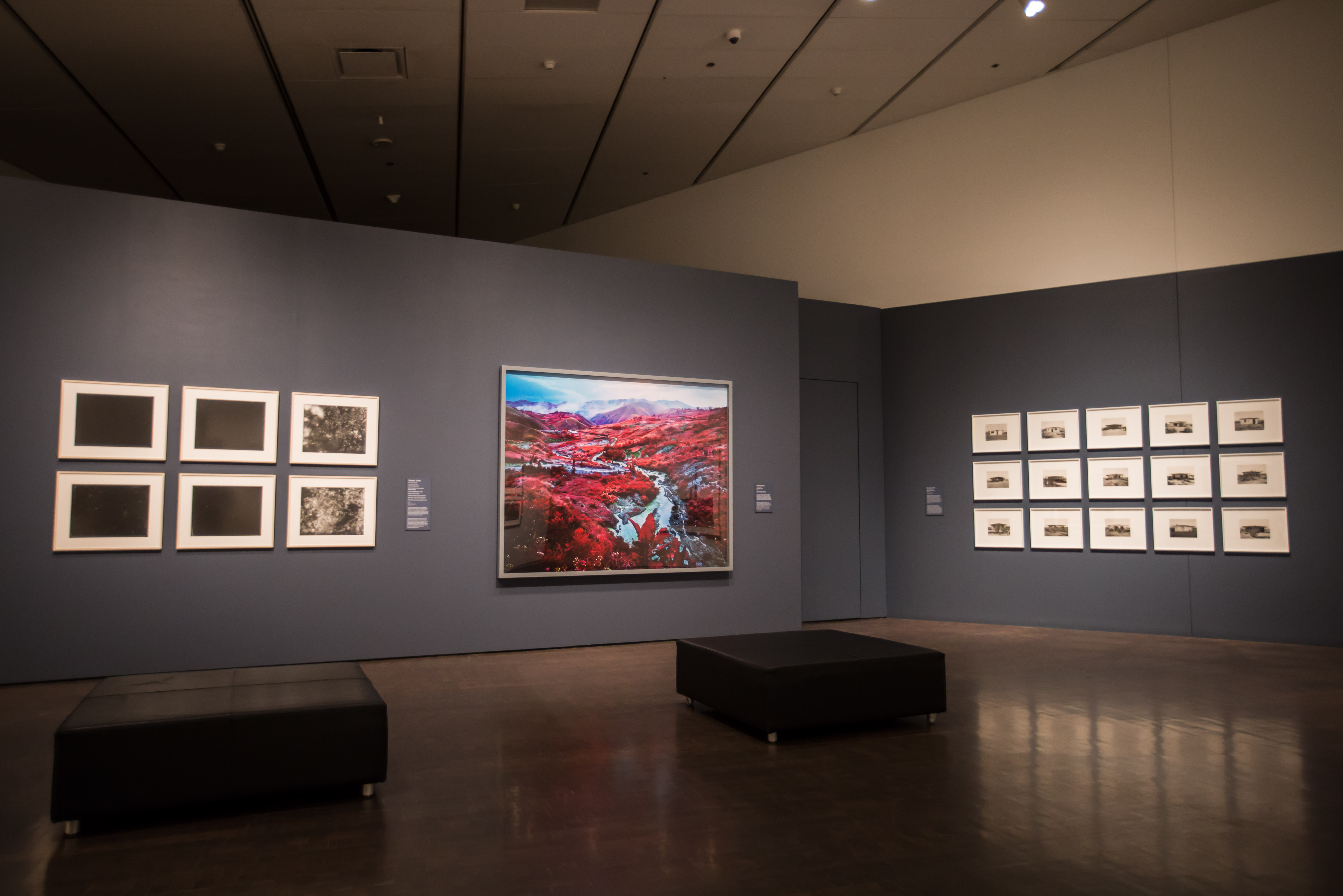
Riding on the shoulders of Intervention, Human Landscapes is a chapter that could not be avoided in the New Territory exhibition. After all, romanticizing nature is no longer the aim of these landscape photographers and pretending humans have no impact on their surroundings is an ideal used by 19th Century artists. Instead, these photographers concentrate on specifically human influences — buildings, social media, cities, wars.
One of the only images in this exhibition that features a city is Gregory Crewdson’s Untitled (Brief Encounter). At first appearing like a painting — an Edward Hopper painting, to be exact — the realization that it’s a photograph may shock some. Everything about it is perfect, from the single tire tracks in the untouched snow to the lights in certain apartment windows to the man standing beneath a movie marquee reading “Brief Encounter.” It’s a perfect picture of loneliness, of solitude in an urban setting. But it’s too perfect because Crewdson stages his photographs — just like a movie set. Once that is understood, Crewdson’s piece calls into question our trust of photographs as much as it questions our mental well-being when we are separated by urbanization.
Richard Mosse, using infrared film, created Commodius Vicus in 2015, after visiting the sites of massacres and human rights violations in the Congo during the Congolese civil war. His piece commands attention in the room with unreal colors and an eye-catching beauty. It is only after learning the story behind the photograph that it descends into some kind of haunting beauty. Do our actions affect the aesthetics of a place? Do atrocities stain their surroundings? These are questions you might leave wondering.
Another notable piece in this section is the Larson Shindelman Twitter-inspired series, Geolocation. Though known as Larson Shindelmen, this is actually a team composed of Nate Larson and Marni Shindelman. Using the geotag that accompanies every tweet (unless you manually turn it off) the team searched through tweets and their corresponding geotags, then returned to the spot where the tweet was uploaded to document it. The team paired those tweets with images of their geotag, presenting visual snapshots of these “literary” moments, some that are sad, some that are funny and some that are just plain odd.
Other artists featured in this section are Mark Ruwedel, Shimpei Takeda and Robert Voit.
Remnants
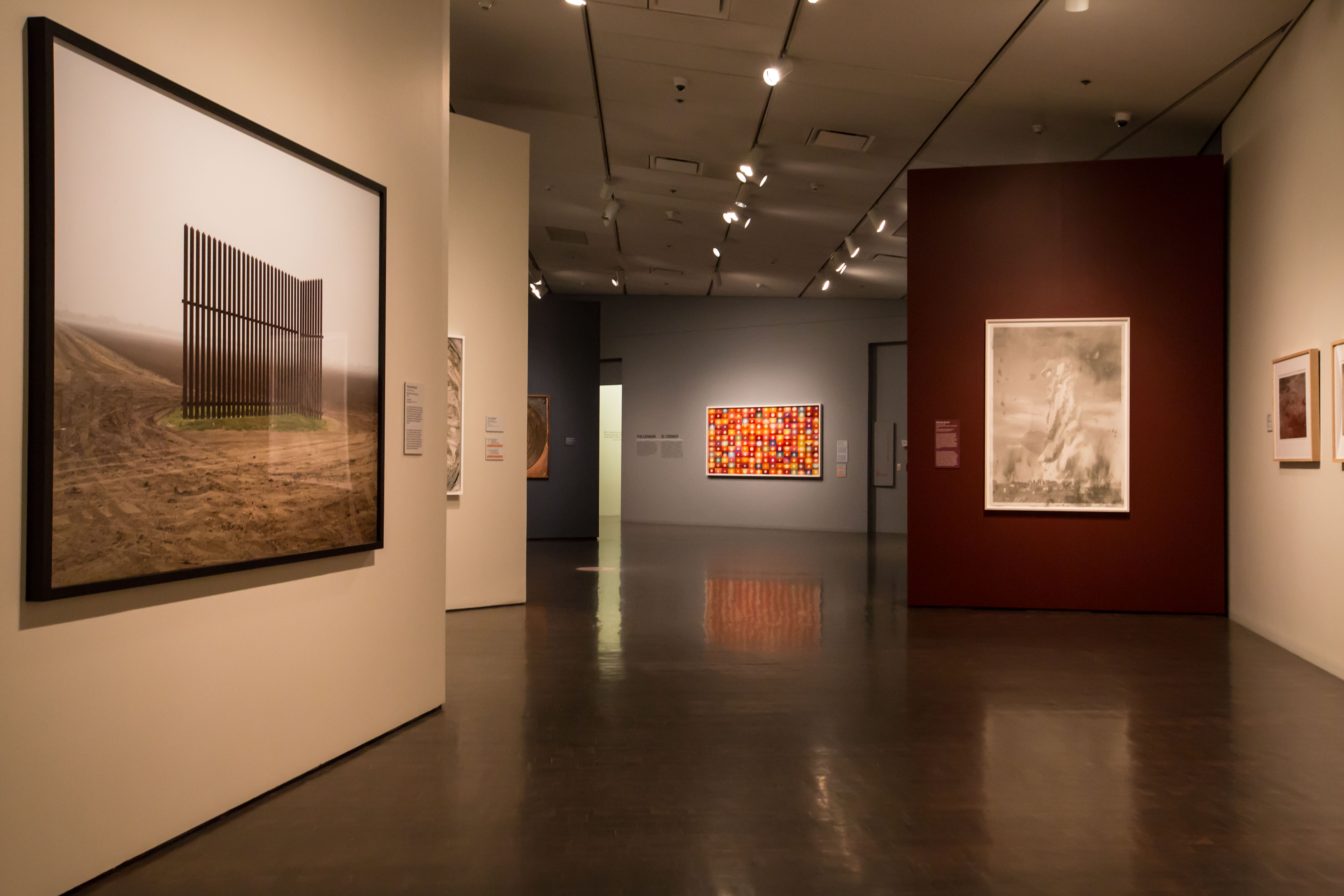
What happens after humans leave their mark? The next chapter of the story, Remnants, allows viewers a witness the consequences of certain actions on landscapes. From the disjointed and tiny pictures by François Xavier-Gbré that illustrate the eventual and inevitable breakdown of all things manmade to a ruined foundation photographed from above by David Maisel, these images may stir up sorrow, guilt, loneliness or curiosity.
The piece of the American-Mexican border wall, a photograph by Richard Misrach, could be mistaken for an artistic sculpture if someone knew nothing about the context. But knowing the situation, this piece urges us to ponder the impact of our actions. Though the section of wall is small compared to the landscape it rests in, the presence and rhythm of tire tracks circling around it and leading to and away from it keeps drawing the viewer’s eye to the center, to the piece of wall. Is it a ruin or a sign of things to come?
John Chiara‘s piece figuratively burns — with bright red, orange and yellow populating the photograph — and is a literal representation of a burn. The landscape is recovering from a fire and the techniques Chiara used to develop the finished piece both accentuate this destruction and glorify it. Instead of focusing on the remnants after humans, Chiara turns his attention to one of nature’s own forms of terror.
Although these pieces rely heavily on items left behind by humans, the chapter is more symbolic of the organic process of degradation. Instead of glorifying nature with magnificent waterfalls or breathtaking mountain vistas, these artists highlight the underbelly, the decomposers, the aftermath.
Other artists featured in this section are Ursula Schulz-Dornburg and Jennifer Colten.
Toxic Beauty
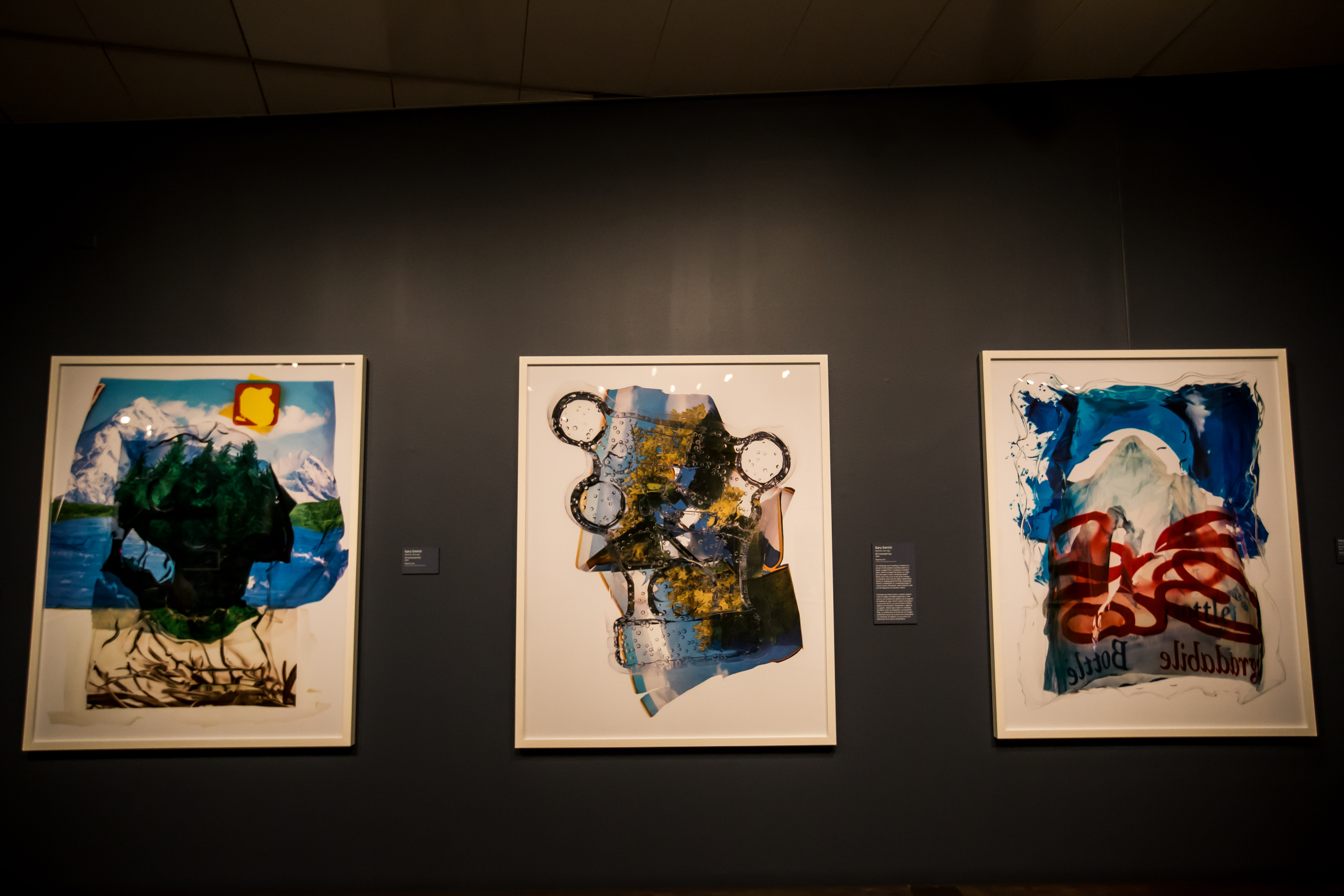
Though this chapter only shows seven works by three separate artists, it holds an unproportionate weight that serves as a tragedy in the overall story, right before the uplifting end. In exact opposition to romanticizing nature, these artists accentuate the hazardous misappropriations of it — specifically, water. But initial impressions of these photographs might present a harmonious tone, based on the visual appeal — pleasing colors, bold composition — instead of relating the accusatory undertones.
Gary Emrich, on the right side of the room, uses a complex and multi-step process to develop the three images. Although they appear as digitally-created prints, these have actually been photographed and developed. Emrich’s trick — and main ethos behind this work — is layering both 2D and 3D objects related to water to obscure images and create visual effects. The imagery is taken from plastic water bottle labels and the distortion comes from Emrich filling “blister packs” (or the pliable plastic wrapped around toys and other disposable items) with water and placing them on top of the label fragments. Through this process, Emrich draws attention to the idealized pictures that marketing companies who sell water use, while diluting and defaming those images with the very ingredients they sell (water and plastic).
David Maisel, who presents three aerial photographs of Owens Lake in California, is seen on the left side. Swathes of pink and gray, and the occasional red or black, seem too vast to comprehend and instead dip into a hypnotic abstraction. In this surreal perspective, emotions are evoked. According to Maisel, the destruction and diversion of Owens Lake allowed Los Angeles to thrive and through this destruction, a trauma was traced into the landscape. And perhaps that is what we feel so perversely when we see these three unimaginable landscapes — the sadness of an ecosystem when we’ve been taught to hail the success of a city.
The other artist featured in this section is Edward Burtynsky.
The Cosmos
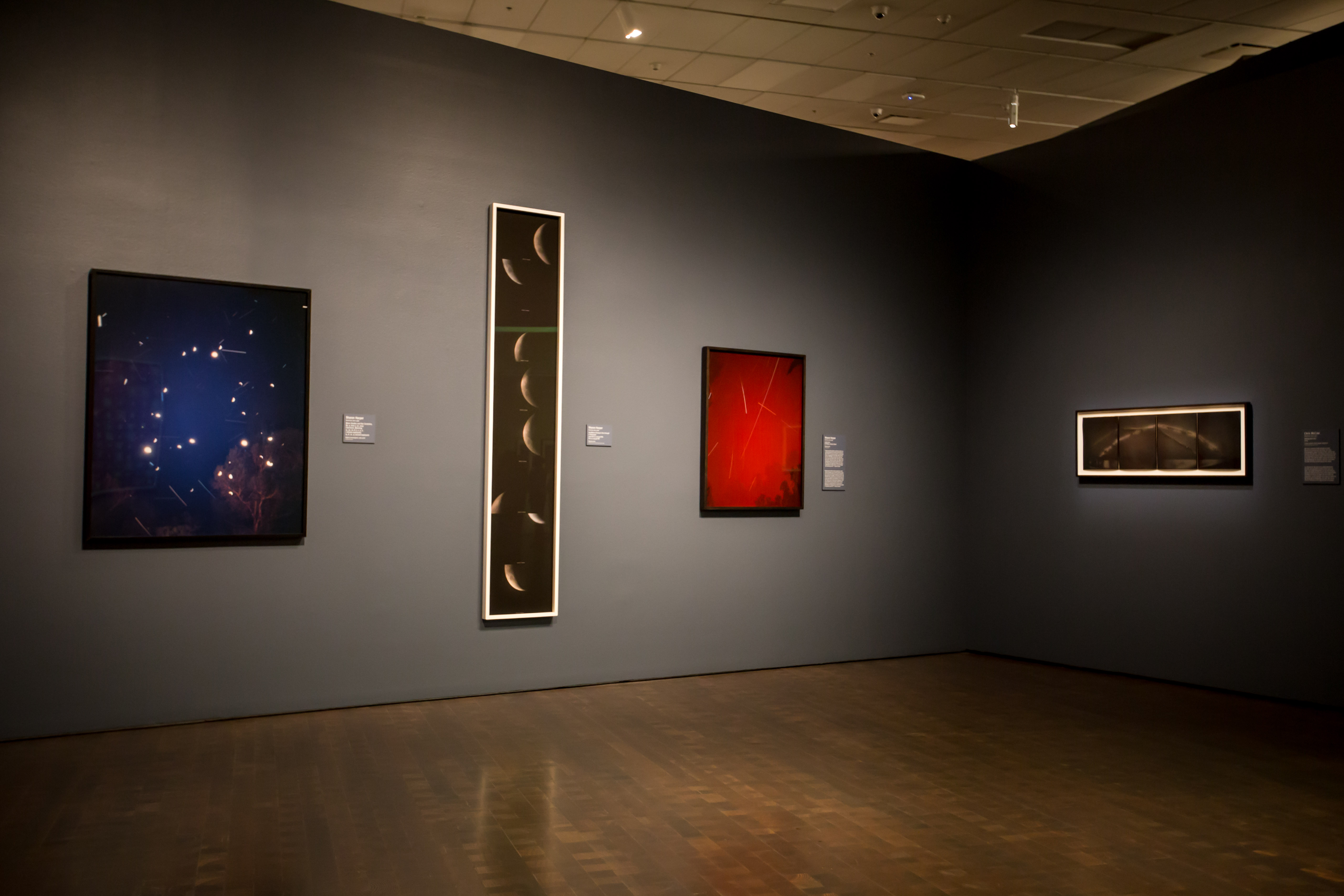
Landscape photography is incomplete without looking skyward, toward the Cosmos — a pursuit envisioned from the very beginning of photography when scientists contributed to the mission in a search to put their telescopic images on paper. Of course, these are some of the most divergent landscapes, ones that we still cannot travel easily to ourselves. And in order for the artists to capture some semblance of what it’s like to gaze into the vast expanse of sky above us, they must deviate from the norms of photography.
Penelope Umbrico bridges the last chapter, Toxic Beauty, and this one with her piece titled 18,297,350 Suns From Sunsets on Flicker. Using images gathered from the public photo site Flickr, Umbrico printed nearly 200 photos from her search of “sunsets,” cropping each so the sun was the central focus. She then placed them in a 12 by 16 grid, producing a quilted pattern highlighted with warm hues and bright shining dots. Her piece illustrates the popularity and insistence that humans possess of snapping photos of a sunset — 18,297,350 publicly shared pictures prove that — while accentuating the steadiness and reliability of the sun.
Sharon Harper‘s work fills the majority of this chapter, with four separate pieces. Though the techniques are ancient, the final images could easily lend themselves to a present-day sci-fi book or movie. By making astral bodies permanent on paper, Harper is realizing the original vision of those scientists mentioned before. And because most of us are not astronomers or astronauts, these imperfect depictions of the cosmos instills a deep and itching curiosity to see it for ourselves.
The other artist featured in this section is Chris McCaw.
The Sublime
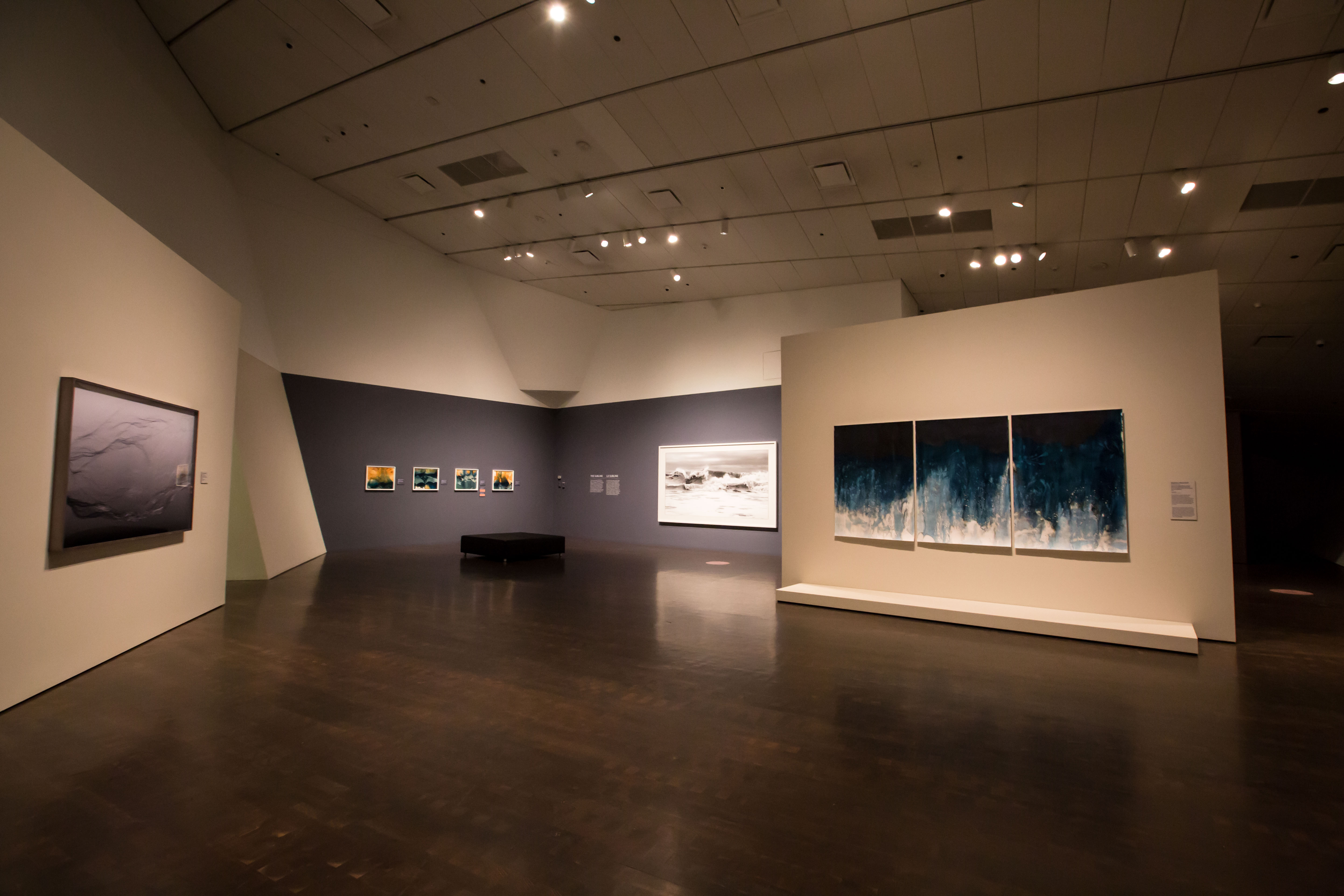
Walking through a hallway and into the last chapter of the exhibition, viewers are greeted with a vast room filled with larger than life photographs. These are the ones that inspire awe in onlookers, that are not romantic but certainly exaggerated. They remind the viewer that nature is worthy of admiration and respect and more often than not, nature doesn’t need human interference to be beautiful. This final chapter, The Sublime, is a cathedral for landscape photography, where the congregation of viewers may feel insignificant.
The most colorful pieces are by Meghann Riepenhoff, both on the wall to the right when you walk in and the three blue pieces on the partition before the exit. Although evocative of the aerial photographs by Maisel two chapters previous to this one, Riepenhoff’s are not photographs of an actual landscape. Using the historical process called cyanotype, Riepenhoff exposes a chemically-treated paper to sunlight then rinses it in saltwater. The reaction of the salt with the chemicals creates the vibrant color variations, and the rinsing methods leave imprints that resemble landscapes from above.
The second piece by artist Dan Holdsworth hangs to the right of the hallway — a digitally-produced and edited image of a glacier that shows points both on the surface and beneath. Holdsworth uses high-tech mapping data and aerial images of glaciers and other landscapes to produce highly conceptual versions of those subjects. Taking away certain pixels and leaving others, Holdsworth gives viewers an incomplete picture and yet keeps just enough shape and definition to allow viewers to recognize something familiar. He calls these pieces the “map of the skin of a glacier” — a statement and concept that perhaps only makes sense when you’ve seen a glacier in person.
In the final room, Denver photographer Sami Alkarim’s work is displayed in two parts, both representing imaginary landscapes envisioned by the artist during a time of hardship. Though based in Denver, Alkarim grew up in Iraq and was imprisoned there for some period of time. During this time, Alkarim said he dreamed of wonderful things to keep his spirits high, and some of those wonderful things came in the form of fantastic vistas. Even without sharing the tragedy of imprisonment, viewers can relate to Alkarim’s work, especially if their “happy place” is in the wilderness.
The other artists featured in this section are Clifford Ross, Andreas Gursky and Santeri Tuori.
—
New Territory is a special exhibition and is included in the price of general admission at DAM, on view until September 16, 2018.
